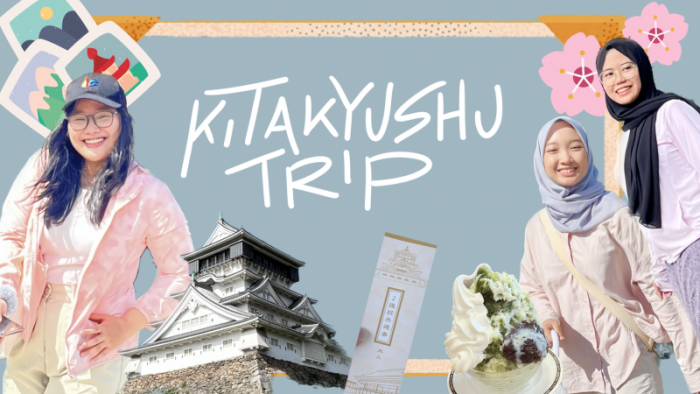

2023/09/01
学生によるインターンシップレポート スラバヤ工科大学Kania, Brianti, Vania
昨年古森さんが講義を行ったスラバヤ工科大学より、3名の学生がはるばるインドネシアからインターンにやって来てくれました。2週間で福岡・東京の建築について見学やスケッチ・模型製作を行い、多くの学びを得たようでした。福岡最終日には事務所内でプレゼン・お別れ会を行い、日本の建築と自国の建築の類似点や、見学した建物の疑問点・考察などをまとめた発表を通して意見交流をしました。異なる文化に触れながら文化の形を尊重してくれる彼女たちとの日々は、非常に刺激的で良い経験となりました。以下、3名によるレポートとなります。(きら)
Creating maquette is one of the most iconic thing about working in the architecture field. Participating jn this short internship has really improved our crafting skill as this is the first time we have made a maquette in the scale of 1:20 in 3 days. One of the most interesting part is when we made the wooden details of the cafe counter since it takes patience and detail-oriented work skill. We are very thankful for the helpful and kind colleagues at the office as well as to fellow intern students, especially tsuchi Kenta-san who taught us how to properly make the model.(Kania)

In Kitakyushu, we went to Kokura Castle. Inside, we learnt about the history of Kokura Castle. We also analyzed the architectural elements and drew a sketch. Furumori-san brought us to see Kokura Daiichi Hospital. It was a modern and innovative architecture. The architecture made the impression of the building unlike a hospital. We also visited Kitakyushu City Library, which has an interesting roof structure. The library made us think of the meaning behind the building’s architecture. Kitakyushu Art Museum by Isozaki Arata gaves a new insight for us, since it is a modern style building but has traditional elements. We found similarity to Japanese, Persian, and Indonesian architecture. (Vania)

On our architectural journey through Fukuoka, we explored shrines, beginning with Hakozakigu, dedicated to Hachiman. Its striking ceramic-tiled roof, stone-built Torii gate, and precise wood-stone integration in the pillars left a lasting impression. We encountered a Joglo-like communal structure with storytelling images in the ceiling. Moving on to Kushida Jinjā, nestled amid modernity, its spacious complex featured traditional structures adorned with golden elements and a roof resembling Hakozakigu’s. Finally, Sumiyoshi Jinjā fascinated us with its diverse Torii gates in varying materials and heights. In essence, this Fukuoka expedition revealed the seamless blend of tradition and modernity, meticulous craftsmanship, and cultural heritage presser vation within Japanese architecture.(Brianti)









